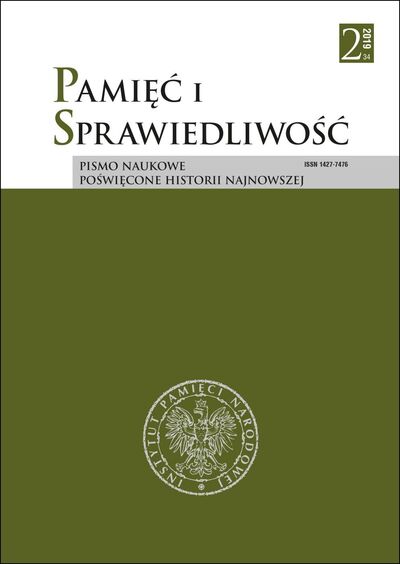The Cold War and Post-Cold War and Armed Conflicts – General Overview
Pamięć i Sprawiedliwość, V. 34 N. 2 (2019), pages: 70-94
Publication date: 2019-12-30
Abstract
Riferimenti bibliografici
Dupuy K., Gates S., Nygard H.M., Rudolfsen I., Rustad S.A., Strand H. and Urdal H. for Peace Research Institute Oslo (PRIO), Trends in Armed Conflict, 1946–2016, 12 VI 2017, https://reliefweb.int/report/world/trends-armed-conflict-1946-2016.
Ferdowsi M.A., Regional Conflicts in the Third World: Dimensions, Causes, Perspectives, in: Law and State, A Biannual Collection of Recent German Contributions to These Fields, Tubingen 1987.
Fukuyama F., The End of a History and the Last Man, New York 1992.
Gaddis J.L., Strategie powstrzymywania, Warszawa 2006.
Henderson C.W., International Relations, Conflict and Cooperation At The Turn of The 21st Century, New York 1997.
Huntington S., Zderzenie cywilizacji, Warszawa 2000.
Korea Bloodbath Probe Ends, “The San Diego Union Tribune”, 10 VII 2010.
Leckie R., Conflict: The History of the Korean War, 1950–1953, New York 1962.
Lankov A., The Real North Korea, Life and Politics in the Failed Stalinist Utopia, Oxford University Press, 2013.
Munkler H., Wojny naszych czasów, Krakow 2004.
Nemeth W.J., Future War and Chechnya: A Case for Hybrid Warfare, Monterrey, California 2002.
Pettersson T., Wallensteen P., Armed Conflicts, 1946–2014, “Journal of Peace Research”, https://journals.sagepub.com/doi/full/10.1177/0022343315595927, 2015.
Roehrig T., Japan, South Korea and the United States Nuclear Umbrella; Deterrence after the Cold War, New York, 2017.
Sewell S., Soviet Air Order of Battle, Korea 1950–1953, Koreawar.com.
Singer D.J., Small M., The Wages of War, 1816–1965. A Statistical Yearbook, New York 1972.
SIPRI Yearbook, 2003, Armaments, Disarmament, and International Security, Oxford 2003.
Toffler A., Toffler H., Wojna i antywojna, jak przetrwać na progu XXI wieku, Warszawa 1997.
Understanding Fourth Generation Warfare, 15 I 2004. https://original.antiwar.com/lind/2004/01/15/understanding-fourth-generation-war/. https://www.airspacemag.com/military-aviation/how-korean-war-almost-went-nuclear 180955324/.
 Język Polski
Język Polski
 English
English
 Deutsch
Deutsch
 Français (France)
Français (France)
 Italiano
Italiano
 Русский
Русский


 PDF (English)
PDF (English)
